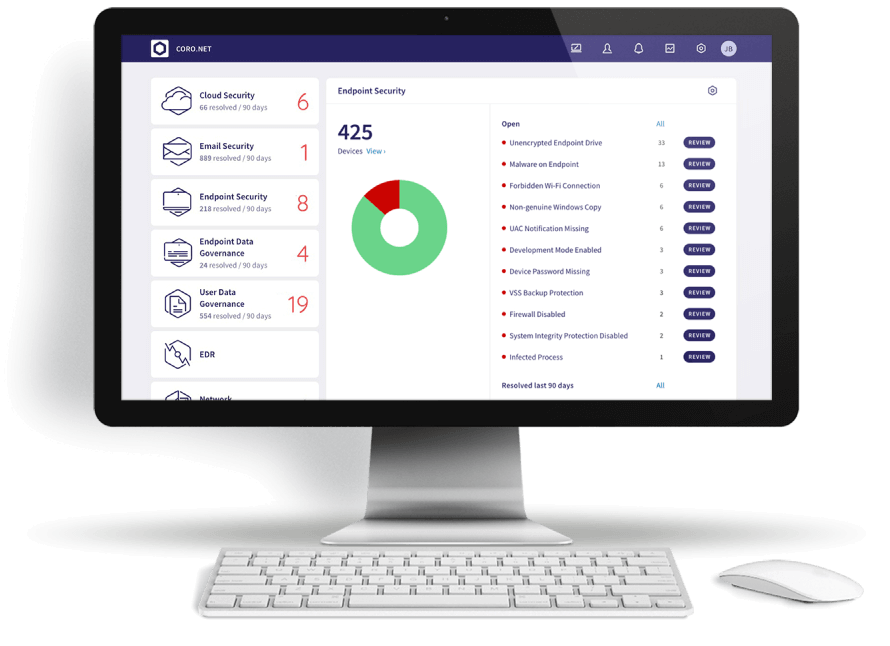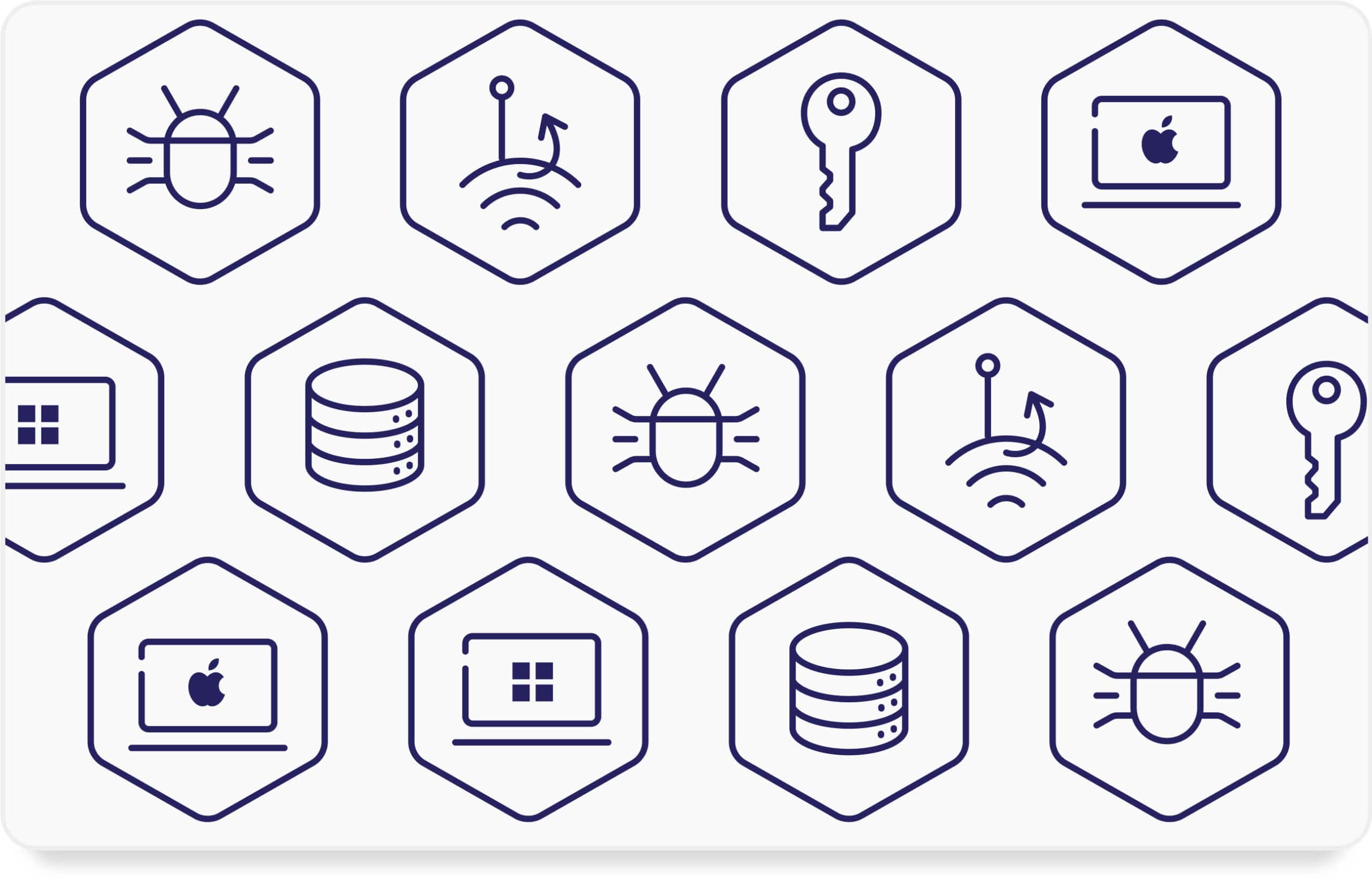Network Detection and Response (NDR) refers to a type of cybersecurity technology and approach that focuses on identifying and responding to threats within a computer network. NDR solutions monitor network traffic, analyze it in real-time, and detect anomalous or suspicious activities that could indicate potential security breaches or malicious behavior.
Forms/Types of Network Detection and Response
There are different forms of NDR, each addressing specific aspects of network security and threat detection, including:
Packet Capture and Analysis
This form of NDR involves capturing and analyzing individual packets of network traffic to identify suspicious or malicious activity. Packet capture tools can examine the contents of network packets in detail, allowing for deep inspection of network traffic.
Flow-based Analysis
Flow-based NDR solutions focus on analyzing network flow data, such as NetFlow, sFlow, or IPFIX records, to detect anomalies and security threats. Flow-based analysis provides insights into communication patterns between network endpoints and can help identify potentially malicious behavior.
Signature-based Detection
Some NDR solutions use signature-based detection techniques to identify known patterns of malicious activity, such as known malware signatures or attack patterns. Signature-based detection relies on databases of known threats and can be effective at detecting well-known malware variants.
Behavioral Analytics
Behavioral analytics-based NDR solutions leverage machine learning and statistical techniques to establish baselines of normal network behavior and detect deviations that may indicate security threats. These solutions analyze patterns of network traffic and user behavior to identify anomalies and potential security incidents.
While not strictly part of NDR, EDR solutions complement NDR by providing visibility into endpoint devices, such as desktops, laptops, and servers. EDR solutions monitor endpoint activities and can detect signs of compromise, malware infections, and suspicious behavior at the endpoint level, which can then be correlated with network-based events detected by NDR solutions.
Cloud-Native NDR
With the increasing adoption of cloud services and infrastructure, cloud-native NDR solutions are emerging to provide visibility and threat detection capabilities for cloud-based environments. These solutions are designed to monitor and analyze network traffic within cloud platforms and services, helping organizations secure their cloud workloads and applications.
Picture the traffic control system in a large city. There are sensors and cameras along the highways and intersections, monitoring the flow of vehicles and congestion levels. Similarly, NDR tools monitor the flow of data packets within a network, including their origin, destination, size, and type.
The traffic monitoring system establishes normal traffic patterns based on historical data and typical traffic behavior at different times of the day, week, or year. Similarly, NDR solutions establish baselines of normal network behavior by analyzing historical data and identifying common patterns of network activity.
If the traffic monitoring system detects unusual congestion, accidents, or deviations from normal traffic patterns, it flags these as anomalies that require attention to traffic control centers or law enforcement agencies, prompting them to take appropriate actions such as rerouting traffic, dispatching emergency services, or implementing traffic control measures. Likewise, NDR solutions generate alerts when they detect potential security threats or anomalies in the network traffic. Security teams can then investigate these alerts and take appropriate response actions to mitigate potential risks.
Why Should Businesses Care About Having a NDR in Place?
A network detection and response solution can prove invaluable. Here’s why:
Reason #1: It Can Detect Advanced Threats
NDR solutions provide businesses with enhanced capabilities to detect and respond to cybersecurity threats. By continuously monitoring network traffic and analyzing patterns and behaviors, NDR can identify malicious activities, anomalies, and potential security breaches that may go unnoticed by traditional security measures. NDR solutions leverage advanced technologies such as machine learning, behavioral analytics, and threat intelligence to detect and respond to evolving threats effectively.
Reason #2: It Reduces Dwell Time
Dwell time refers to the duration between a security breach occurring and its detection. NDR solutions help reduce dwell time by quickly identifying and alerting security teams to suspicious activities, enabling faster incident response and mitigation efforts. This helps minimize the potential impact of security incidents on the business.
Reason #3: It May Support Legal/Regulatory Requirements
Many industries and regulatory frameworks have stringent cybersecurity requirements and compliance standards that businesses must adhere to. Implementing NDR solutions can help organizations meet regulatory requirements related to data protection, privacy, and cybersecurity, thereby avoiding potential fines, penalties, and reputational damage associated with non-compliance.
Reason #4: It Protects Your Data
NDR solutions help protect sensitive data by monitoring network traffic for unauthorized access, data exfiltration attempts, and other malicious activities that could compromise data integrity and confidentiality.
NDR and Your Broader Cybersecurity Program
NDR fits easily into your broader cybersecurity programs, including frameworks such as:
The National Institute of Standards and Technology (NIST) Cybersecurity Framework is a widely adopted framework that provides guidelines and best practices for improving cybersecurity risk management. NDR aligns with multiple functions outlined in the NIST framework, including Identify, Detect, Respond, and Recover. NDR solutions help organizations identify network assets and vulnerabilities, detect anomalous behavior and security incidents, respond to incidents in real-time, and recover from cybersecurity events effectively
The MITRE ATT&CK (Adversarial Tactics, Techniques, and Common Knowledge) Framework is a knowledge base of adversary tactics and techniques used by cyber threat actors. NDR solutions can be integrated with the MITRE ATT&CK framework to map detected threats and security events to specific adversary techniques and tactics. This helps organizations understand the behavior of attackers and improve their defenses against sophisticated cyber threats.
ISO/IEC 27001
ISO/IEC 27001 is an international standard for information security management systems (ISMS). NDR solutions contribute to the implementation of controls and measures required by ISO/IEC 27001 to ensure the confidentiality, integrity, and availability of information assets. NDR helps organizations meet specific requirements related to continuous monitoring, incident detection and response, and risk management within their network environments.
CIS Controls
The Center for Internet Security (CIS) Controls provides a set of best practices for cybersecurity designed to help organizations mitigate the most common cyber threats effectively. NDR solutions support several CIS Controls, including continuous monitoring, controlled use of administrative privileges, secure configuration management, and incident response and management.
SANS Critical Security Controls (CSC)
The SANS Institute’s Critical Security Controls (CSC) is a prioritized framework of cybersecurity measures aimed at reducing cyber risk. NDR solutions contribute to several CSC, including continuous monitoring and analysis of network traffic, detection and response to security incidents, secure configuration management, and security awareness training for personnel.
Related Systems or Technologies
NDR often supports or makes use of sophisticated technology to keep your network safe. This may include:
Packet Capture and Analysis
Packet capture and analysis technologies allow NDR solutions to intercept and analyze individual packets of network traffic in real-time. These technologies capture network packets as they traverse the network infrastructure and enable deep inspection and analysis to identify potential security threats, anomalies, and malicious activities.
Behavioral Analytics
Behavioral analytics technologies analyze the behavior of users, devices, and applications within the network environment to establish baselines of normal behavior and detect anomalies or deviations that may indicate security threats. NDR solutions leverage behavioral analytics to identify suspicious activities, unauthorized access attempts, and other indicators of compromise within the network.
Threat Intelligence Integration
Threat intelligence integration involves incorporating external threat intelligence feeds, indicators of compromise (IOCs), and known attack signatures into NDR solutions. By integrating threat intelligence data, NDR solutions can identify and correlate network events with known threats, vulnerabilities, and attack patterns, enhancing the accuracy and effectiveness of threat detection and response capabilities.
NDR solutions often integrate with SIEM systems to provide centralized logging, correlation, and analysis of security events across the organization’s entire IT infrastructure. Integration with SIEM systems enables NDR solutions to correlate network-based events with other security data sources, such as endpoint logs, firewall logs, and intrusion detection systems, providing comprehensive visibility and threat detection capabilities.
Related Regulations and Compliance Goals
NDR solutions can also help your organization meet your internal and external compliance requirements. While NDR isn’t mentioned in specific regulations, it can support your efforts in becoming compliant:
GDPR mandates that organizations protect the personal data of individuals and report data breaches within a certain timeframe. While GDPR doesn’t explicitly mention NDR, the capabilities provided by NDR solutions, such as continuous monitoring, threat detection, and incident response, support organizations in meeting GDPR requirements by helping to identify and respond to data breaches and security incidents promptly.
PCI DSS requires organizations that process credit card payments to implement security controls to protect cardholder data. While NDR is not explicitly mentioned in PCI DSS, its capabilities, like monitoring network traffic for unauthorized access, detecting anomalies, and responding to security incidents, align with PCI DSS requirements related to network security and monitoring.
ISO/IEC 27001
ISO/IEC 27001 is an international standard for information security management systems (ISMS). While NDR is not explicitly mentioned in ISO/IEC 27001, its capabilities, such as continuous monitoring, threat detection, and incident response, align with several controls and requirements outlined in the standard, including those related to information security monitoring, incident management, and risk assessment.










